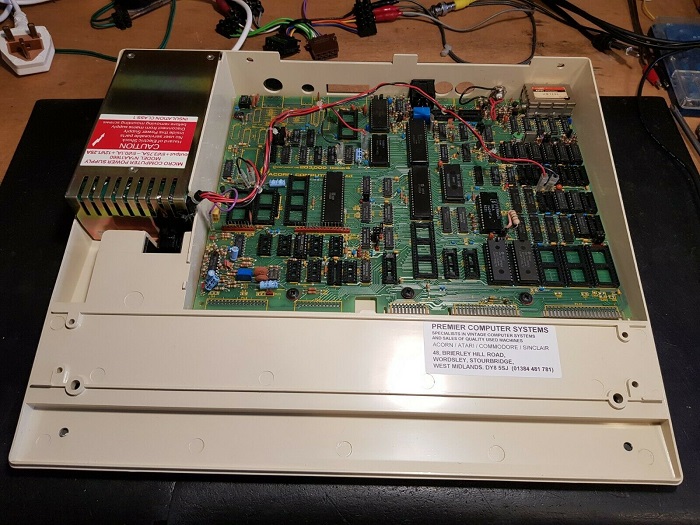Difference between revisions of "Model A"
(→Characteristics) |
|||
| Line 44: | Line 44: | ||
| − | All of these components could be installed to bring the machine up to full Model B specifications, and it is quite difficult to find an unmodified Model A now. | + | All of these components could be installed to bring the machine up to full Model B specifications. Sockets were present on the board to allow easy installation of the missing chips, and it is quite difficult to find an unmodified Model A now. |
Revision as of 10:40, 14 September 2020
The first BBC Micros were the Models A and B, released with much fanfare in early 1982. Powered by a 2Mhz 6502A processor and with 16K and 32K of memory respectively, at the time the capabilities of the Model B far exceeded what most other 8-bit microcomputers were capable of. Both models came supplied with a fully fledged Machine Operating System and BBC BASIC, the enhanced version of the BASIC language that included support for advanced programming structures and a built-in 6502 assembler.
The BBC Model A was created as a lower-cost variant to encourage higher sales outside of the schools sector. It was launched at a price of GBP £235 (compared with GBP £335 for the Model B). This price rose to GBP £299 as Acorn found they couldn't make it at the lower price.
Early models were marked as 'BBC Microcomputer' on the Perspex keyboard strip - this, however, led to a trademark dispute with Brown Boveri Coporation, and the badges were changed to read 'British Broadcasting Corporation' instead.
All BBC Micros were capable of storing and loading data on tape via the cassette interface, but the Model B was also available fitted with an Econet interface (ANB02) additional 8271 floppy disc interface (ANB03) and with both disc and Econet interfaces (ANB04). Options on the Model A were by default limited to tape-only (ANA01) or Econet (ANA02).
The Model B's number of I/O and interfacing options was unmatched and some of the possibilities were near revolutionary for an 8-bit microcomputer of the day. Options comprised a cassette interface, RS-423 serial port, advanced analogue interface, floppy disc drive connector, parallel printer port, memory-mapped user port, 1Mhz bus interface, the Tube connector for high-speed communication with a Second Processor, a choice of RF, composite and RGB video output, and the contemporarily significant option of an Econet network interface. The Model A lacked most of these options bar Econet due to being built without the necessary connectors and some of the required components.
Variants
Acorn released two versions of the Model A
- ANA01 - The standard Model A
- ANA02 - Fitted with the optional Econet interface chips and socket
Characteristics
While physically identical, the Model A lacked a number of internal components and interfaces.
Internal
- 16Kb of RAM instead of 32Kb (The empty spaces were fitted with sockets to simplify upgrades)
- 6522 VIA Chip
Rear interface sockets
- RGB port
- Serial port
- Analogue port
Underside interface sockets
- Tube
- User port
- Centronics (printer) port
- 1MHz Bus
All of these components could be installed to bring the machine up to full Model B specifications. Sockets were present on the board to allow easy installation of the missing chips, and it is quite difficult to find an unmodified Model A now.

